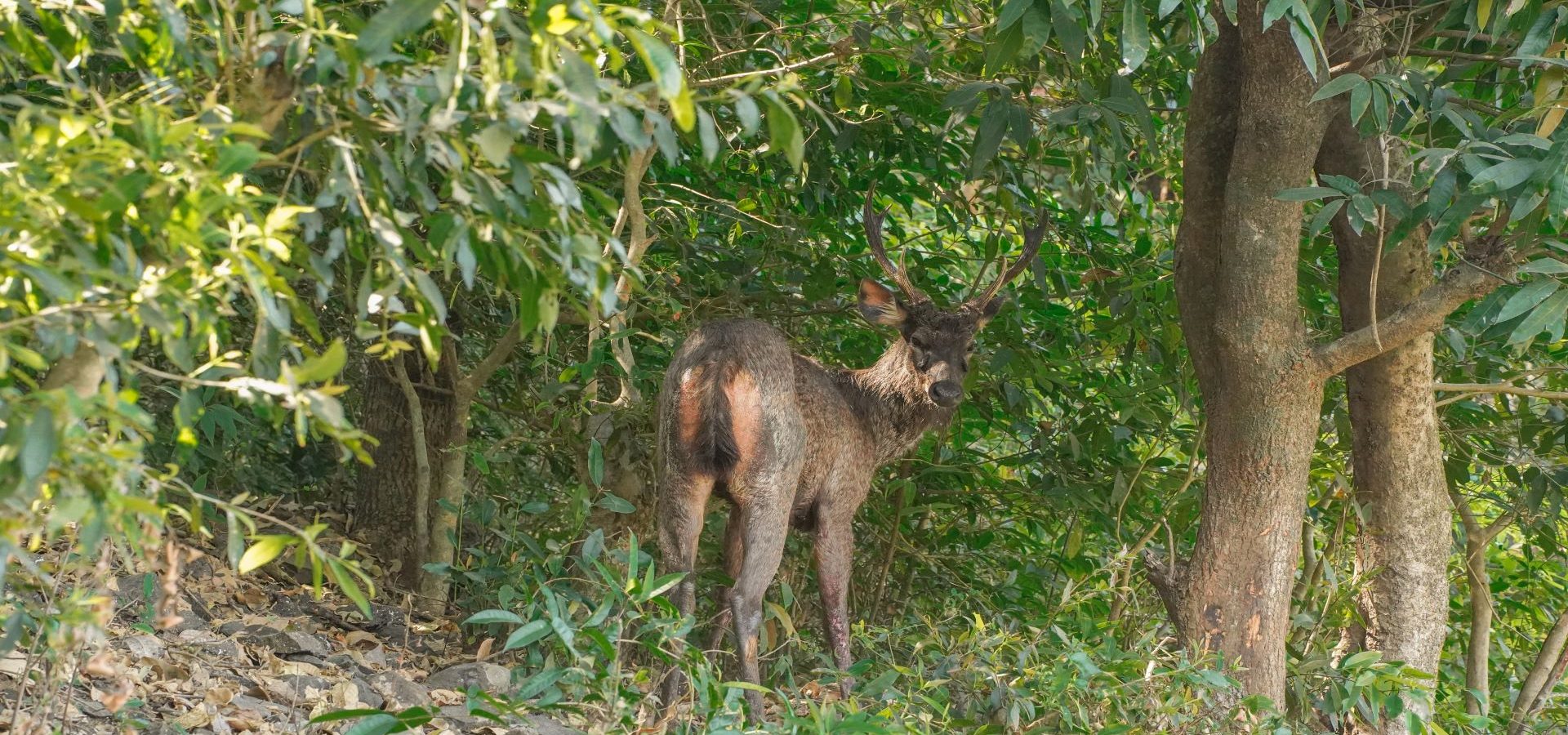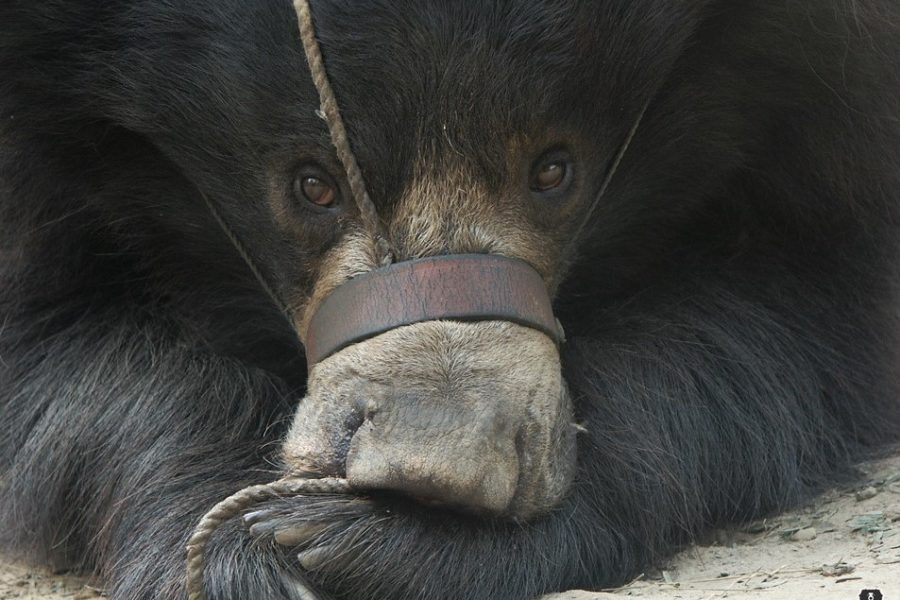Deer are agile animals and even rival some of the fastest predators. However, some deer are not blessed with such thunderous speed, but with magnificent antlers instead. To add to that, these splendid animals are also the largest deer found in all of south-east Asia!
The deer we are referring to is the Sambar, which is native to India, southern China and southeast Asia. Adult males can weigh up to 550 kg. The word Sambar (not the popular south Indian broth!) usually refers to the Indian Sambar (Rusa unicolor). The word is also used to denote two other species, that is the Philippine deer also known as the Philippine Sambar (Rusa marianna), and the Javan Rusa or the Sunda Sambar (Rusa timorensis).
A Regal Deer
The males of the Sambar species have antlers measuring up to 3.5 feet, and from a behavioural aspect, they are a significant part of their life as the deer tend to use them during a face-off. Sambars have been spotted standing on their hind legs and clashing their antlers against each other, which is a rare phenomenon among deer.
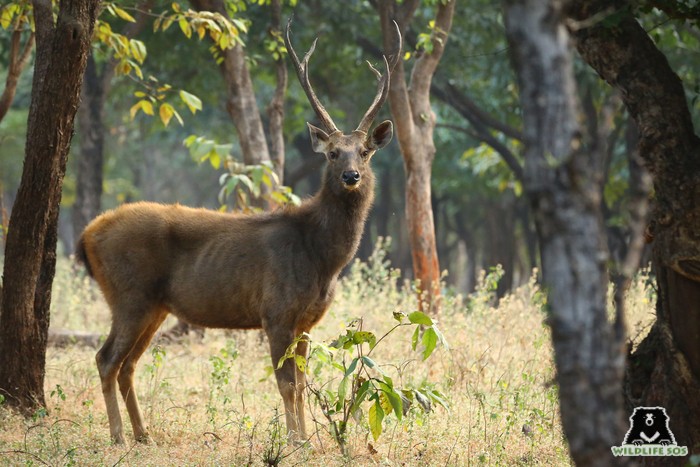
It is interesting to note here that some may confuse deer, including the Sambar, to be antelopes. Deer belong to the Cervidae family, whereas the members of the Bovidae family are referred to as antelopes. Another major feature that distinguishes deer from antelopes is that deer have antlers that shed and grow annually, whereas antelopes possess horns which grow throughout their lifetime.
Sambars are majorly nocturnal and crepuscular (active at dawn and dusk) animals. The males of the species lead a solitary life. One of the most common male behaviours seen in the wild is digging their antlers in urine-drenched soil. With an ability to use only two feet (or bipedalism) that is rare among deer, Sambars can stand on their hind legs and rub tree branches with their antlers to mark their territories. In a unique courtship behaviour, mating males also spray their face with urine.
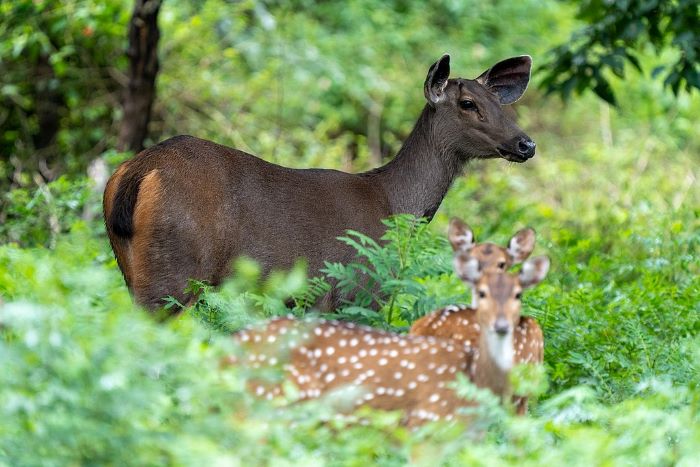
The female deer live in small herds of 3-4 individuals, but this number can go up to 16 as well. Despite the absence of antlers, living in such large groups allows them to defend their infants from predators. The females also lack the thick mane of hair around the neck that the males possess.
In terms of diet, the Sambar has a wide variety of vegetation to choose from, starting with shrubs and trees, grasses, fruits and even water plants. This species doesn’t prefer dense or thick foliage as their living environment. That is why forest areas in west-central India such as Kanha, Corbett, Ranthambore, Bandhavgarh, Sariska and Dudhwa, in addition to Kaziranga and Manas in north-eastern India are regions where Sambars can be spotted in large numbers.
Trouble in Deerland
In the past 30 years, there has been a nearly 50% decline in their population across south-east Asia, Borneo and Sumatra due to habitat loss and poaching. There have been demands noticed for meat and antlers, which have directly resulted in their decreasing numbers in Laos, Vietnam and Cambodia.
In the Indian context, the population of this deer species is comparatively more stable due to the network of protected areas (PAs), but their numbers have dwindled outside PAs and reserves. This highly jeopardises the Sambar population, which in turn can affect their predators. This disruption of the food chain can lead to an increase in human-wildlife conflict scenarios involving large carnivores who are out to seek prey.
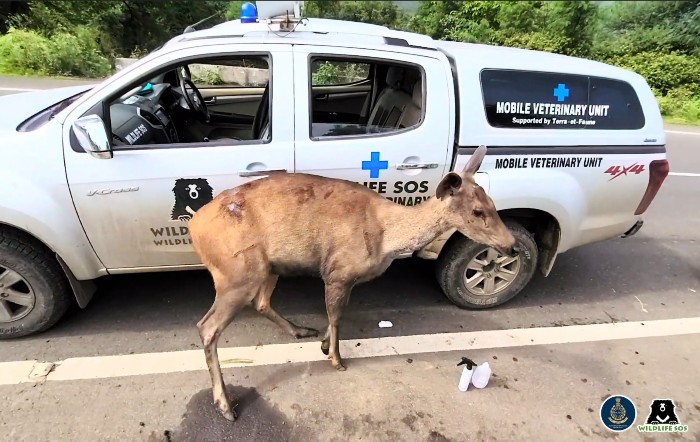
Based on these factors, it seems logical that the Sambar is a vulnerable species under the IUCN Red List of Threatened Species. It is also protected under Schedule III of the Wildlife (Protection) Act, 1972. However, in India, their habitat is under threat due to being fragmented by linear intrusions such as roads, highways and railways. As a result, Sambar can become victims of roadkill. Open wells that perforate rural areas fragment their habitat too, and is another (in)visible threat to their existence.
Rescued in Time
Our team, operating out of the Manikdoh Leopard Rescue Centre in Maharashtra, has been involved in the protection and conservation of this species through timely rescues. This goes without saying that saving even one individual amounts to the prevention of biodiversity loss. Wildlife SOS has contributed positively to keep a check on biodiversity loss by rescuing this magnanimous species on numerous occasions – from incidents of highway accidents as well as from open wells.
In 2021, a large Sambar deer fell victim to a road accident while crossing National Highway-222 near Vadkhal village, located in the Pune district of Maharashtra. Identified as an approximately 4-year-old female, the deer was wounded and in severe trauma. The Wildlife SOS team rushed to her aid and our veterinarian provided treatment on the spot. For the deer to regain strength, fluid therapy was also provided while she was being administered topical medication for minor wounds.
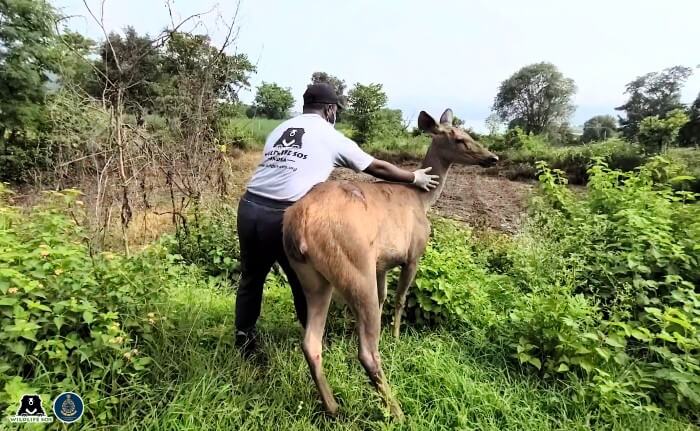
Fortunately, the Sambar had not sustained intensive injuries and after an hour, she began showing improvement. After a few wobbly steps, the team helped her up on her legs and soon released her back into the wild. There are very few places left without roads and highways, and wild animals suffer gravely as a result of that. Our efforts are aimed at providing immediate intervention to prevent major injuries or mortalities of wild animals.
Our team in Maharashtra has also rescued Sambars from open wells and tanks on a couple of occasions. In 2018, the team had to rush to the assistance of a 2-year-old female Sambar stuck inside a 12-foot-deep water tank in Khangaon village. In a 2-hour-long operation, Wildlife SOS and the forest department rescued the terrified deer with the use of rope harnesses. They made sure that the animal was calm and relieved, after which they released her back into the wild.
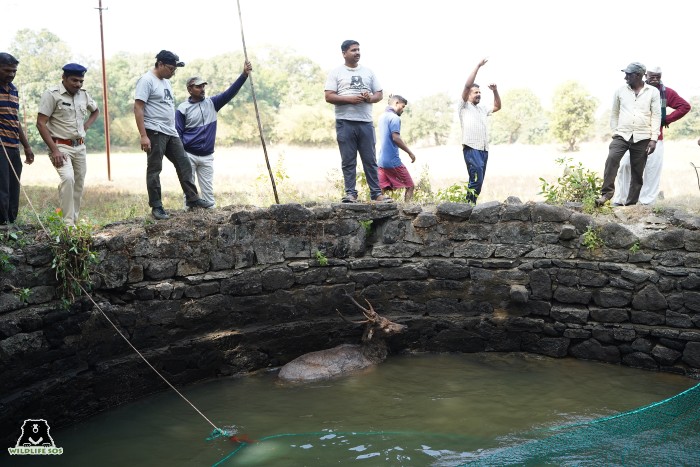
In a recent incident in January 2023, a Sambar was rescued collaboratively by Wildlife SOS and the forest department from Ghatghar village in Maharashtra’s Ahmednagar district. The male deer, estimated to be 3-4 years old, had fallen into a 50-foot-deep well. It had later clambered onto a ledge on the inner side of the well. The rescuers lowered safety nets and ropes, and carefully brought the deer out of the water-filled well. After our veterinarian performed a health assessment, the deer was safely released back into his natural habitat.
What Comes Next
With towns and villages encroaching forests more and more, wild animals often find themselves in the middle of human settlements. Sambar deer residing in the neighbouring forests come into farmlands to forage, which sometimes poses the hazard of them falling into uncovered wells. Assessing this issue, Wildlife SOS has started the Open Wells Conservation Project to nip the problem in the bud. So far, Wildlife SOS has already covered 9 open wells with the aim of covering a total of 40 across the state of Maharashtra.
This project is a scientific and long-term solution to halt unsuspecting animals from falling into open wells and facing fatalities. Therefore, we need your support to complete this project. Help us protect wildlife by becoming a monthly donor for Wildlife SOS and let your contribution be meaningful.

